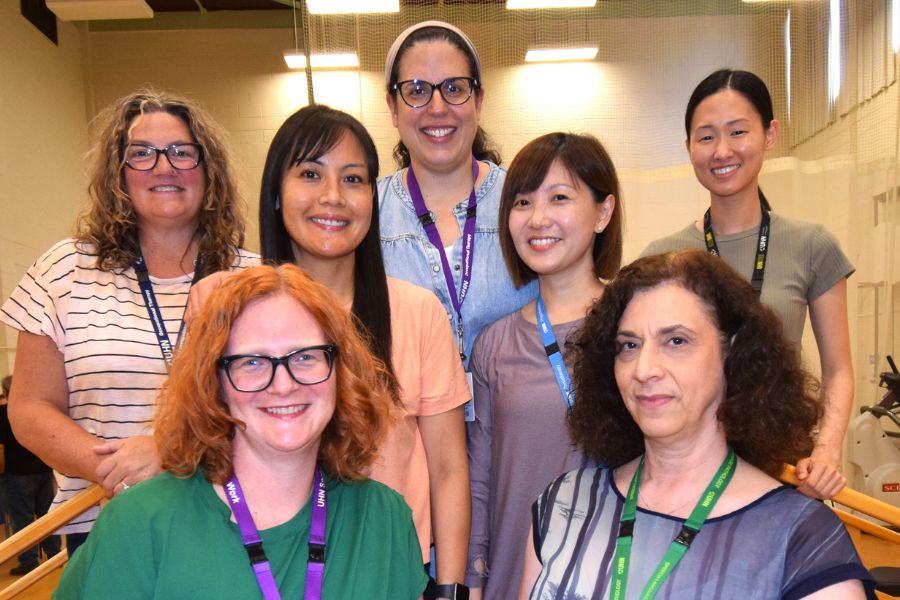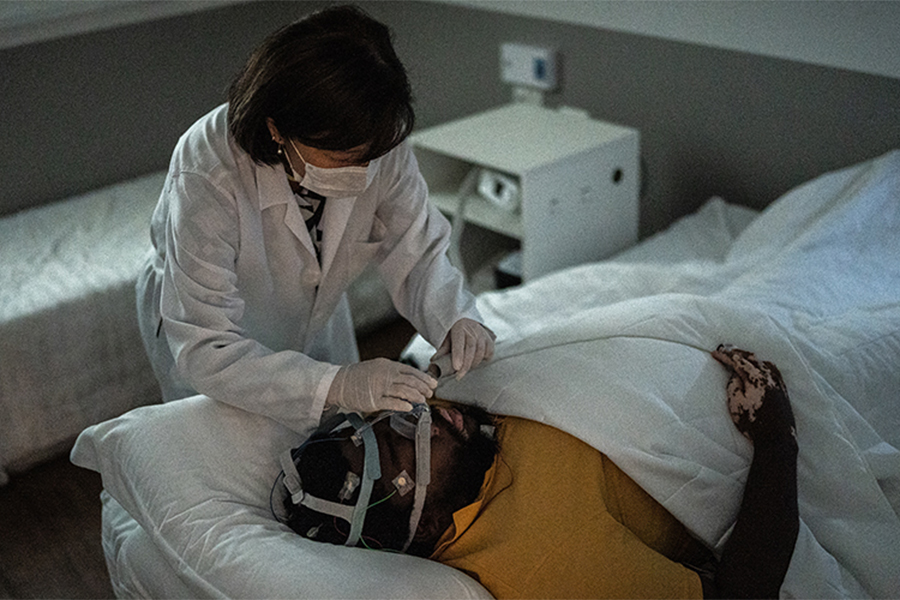
November is falls prevention month. This month raises awareness about the importance of preventing falls and related injuries and how people with balance and mobility challenges can get the help they need.
University Health Network’s (UHN), KITE Research Institute at Toronto Rehab is home to a state-of-the art laboratory dedicated to understanding balance and mobility challenges – FallsLab. Researchers at KITE’s FallsLab develop therapies through innovative testing technologies to prevent and reduce falls and injuries.
We spoke with Avril Mansfield, senior scientist at Toronto Rehab’s KITE Research Institute to learn more about what happens inside FallsLab.
What is FallsLab?
FallsLab is an innovative lab, equipped with a large moving platform (the largest moving platform of this kind in the world, measuring at 6x3m!), where researchers study how people use balance reactions to try to avoid falling after losing balance. While a research participant stands or walks across the platform, an overhead safety harness tracks the position of the participant to prevent falls to the ground. The researcher will initiate small to medium platform movements at a specific moment to cause a slip or trip. This measures the participant’s reaction to the destabilizing motion. “A bit like when you are on a bus or train that suddenly moves or stops,” says Avril. “We use instruments like force plates, three-dimensional motion capture and electromyography to study how people control their balance reactions.”
Why is FallsLab important?
Avril notes FallsLab may seem like a misnomer to some because they don’t actually want people to fall in the lab! Instead, the lab assesses how people stop themselves from falling after they lose their balance and how different conditions affect control of balance and gait. “This gives us specific information about how balance control is impacted by illness, injury, or aging and clues about how to improve these aspects of balance control with balance training,” says Avril.
How is FallsLab contributing to preventing or mitigating injuries?
Studies at FallsLab explore how balance control is impacted by illness, injury or aging. Testing conducted by researchers is used to design fall prevention interventions such as training or safety equipment, with the goal of improving balance control and preventing falls. Avril says the lab aims to measure balance control before and after an intervention and determine how balance improves as a result of the intervention. “Ideally, we want to know if our intervention prevents falls in daily life, but we need to collect a lot of data from hundreds of research participants to show significant reductions in everyday falls. By simulating near falls in FallsLab, we can more quickly collect data to demonstrate effectiveness of a fall prevention intervention.”
What is on the horizon for FallsLab?
FallsLab is at the centre of innovation to design and test technologies that prevent or mitigate falls. Avril was very excited to share FallsLab will be receiving a new ‘markerless’ motion capture system. The lab’s current motion capture system requires participants to wear reflective markers in order for the technology to trace movement. The current system can take up to 45 minutes to outfit participants with these markers, which can significantly burden some patient groups. “The new markerless system allows us to collect motion capture data with quick set up time which will make FallsLab available to more patient populations,” says Avril.
UHN’s Toronto Rehab continues to make incredible happen for patients on the journey to rehabilitation today and tomorrow.


